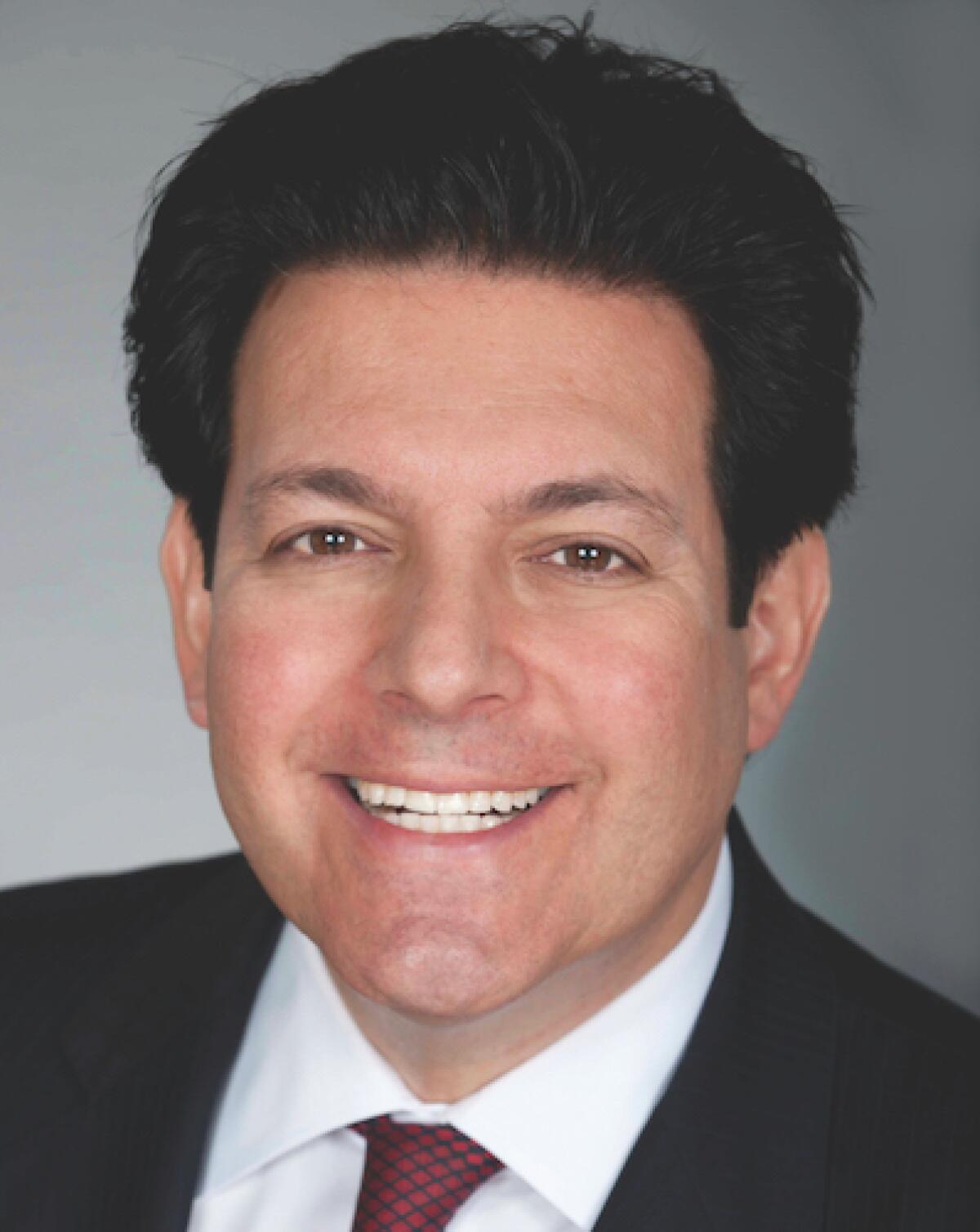Latest Trends in Intellectual Property Licensing and Litigation

The Latest Trends in Intellectual Property Licensing and Litigation panel is produced by the L.A. Times B2B Publishing team in conjunction with Citrin Cooperman; Greenberg Traurig LLP; and Miller Kaplan.
After the many unprecedented operational changes that businesses in every sector had to make last year, a number of new factors have arisen in terms of managing intellectual property and licensing. As IP best practices for businesses continue to shift, even the most seasoned C-suiters find themselves seeking answers to crucial questions.
To address these issues and concerns, as well as many other topics pertaining to IP law, licensing and litigation, the Los Angeles Times B2B Publishing team turned to three uniquely knowledgeable professionals for their thoughts on the most important “need to know” insights and to get their assessments regarding the current state of intellectual property legislation and the various trends that they have been observing in general.
Q: What are some of the most meaningful recent changes to the intellectual property law landscape?

Justin Buencamino, CFE, Director, Royalty Audit, Compliance and Consulting, Citrin Cooperman: The Music Modernization Act (MMA) has resulted in a sea change to U.S. copyright law benefiting rights holders across the music industry. Most notably, the Mechanical Licensing Collective went into effect at the beginning of this year, transforming the way streaming mechanical licenses and royalties are administered and reported. There is also the CLASSICS Act, part of the MMA, which grants federal protection to pre- 1972 masters. Additionally, in June, the Copyright Royalty Board (CRB) increased webcasting royalty rates through 2025. Music publishers and songwriters are also continuing to realize annual increases in streaming mechanical rates established by the CRB in 2018; however, this is under appeal so we’ll need to keep an eye on how that plays out. And lastly, outside the U.S., we’re seeing a number of similar legislative initiatives recognizing the rights of creators to receive fair compensation.

Ian C. Ballon, Co-Chair, Global Intellectual Property & Technology Practice Group, Greenberg Traurig LLP: The U.S. Supreme Court’s 2021 decision in Google v. Oracle is important in establishing that the use of APIs may be a fair use. The opinion also indirectly provides important guidance on software copyrightability. The enactment of the Trademark Modernization Act (which harmonized, and in many circuits, liberalized the standards for obtaining injunctive relief) and the U.S. Supreme Court’s 2020 decision in Romag have resulted in an uptick in trademark infringement suits. The new Copyright Claims Board will make it easier for copyright owners to obtain remedies in cases where the dollar values at issue are small. The Copyright Office’s DMCA Report is recommending against legislative changes to the statute (I was invited by the Copyright Office to testify at hearings held in San Francisco leading up to the report). New York’s adoption of posthumous rights of publicity will impact entertainment companies, including for virtual reality performances.
Q: What aspects of IP are most important to address in 2021?

Vincent Leoni, CPA, Partner, Miller Kaplan: The protection and enforcement of rights continue to be important aspects of intellectual property in 2021. Working closely with business partners to ensure that the IP is exploited in the manner set forth in a license agreement will enhance its value and continue an income stream. As we roll out of this pandemic, adherence to distribution through authorized channels and territories is paramount. Maintaining profile and value of IP as well as the rights of others who have licensed the IP will ensure continued marketability of the IP.
Q: How has the COVID-19 pandemic affected your clients in terms of IP?
Buencamino: The market for music catalogs (both master recordings and music publishing) has been very hot for the past three years. From an IP transactions perspective, the pandemic has led to a further increase in the number of transactions taking place. This is because touring artists lost significant live show income during the lockdown. While they didn’t entertain a sale of their intellectual property prior to COVID, many artists decided to go to market with their catalogs to fill the gap of lost touring revenue. Streaming services for music, film, and TV have been steadily growing and the pandemic helped spur that growth as home entertainment was often the only accessible option. Investors with diversified portfolios, especially ones that include uncorrelated assets, always weather a turbulent economy more successfully than investors heavily focused on a single asset class.
“Businesses need to think in terms of not only their technical legal rights, but also how litigation (or even a cease-and-desist letter) will be perceived online. When companies are overly aggressive, they not only risk losing a case but also alienating their customers.”
— –Ian C. Ballon
Q: The U.S. government and governments around the world are considering ways to stimulate the economy in the wake of COVID-19. What role do you think IP plays?
Buencamino: Over the past year and a half, local economies have sorely missed the usual boost in revenues that live productions provide. I think we’ll see governments around the world throw their support behind live entertainment productions, particularly in music. We’re seeing that in New York City, for example, with the mega concert scheduled in Central Park this summer celebrating the city’s comeback from the pandemic. With many retailers and eateries still shut, initiatives like this will hopefully bring back the financial support that many of these businesses desperately need from its customers.
Q: What are the trends in IP litigation that entertainment companies in L.A. should consider?
Leoni: More and more license agreements include a liquidated damages clause as a way to measure damages when a breach occurs in a licensing arrangement. This clause defines the value of any damages. If this clause is not sufficient to settle disputes, these license agreements include arbitration and mediation clauses. Historically, mediation and arbitration are a more efficient, cost-effective and a quicker way to settle disputes. A growing trend is also to agree upon a neutral expert to determine what the damages should be. Full access to financial documents, agreements and correspondence is granted the expert who then calculates the damages if any.
“Conducting royalty audits of licensees is one way to ensure you are maximizing value. Audits are a best practice in IP licensing and can result in identification of unreported or underreported income streams that will increase your IP value.”
— –Justin Buencamino, CFE
Ballon: Strategy, big data, and data privacy. I rely on big data in my IP litigation practice to predict outcomes and frame arguments. IP claims increasingly are joined with data privacy and security, especially in suits involving database protection, scraping and AI. Tightening standards for personal jurisdiction require greater creativity in dealing with global piracy. Also, trade secret claims are asserted more frequently since the DTSA’s enactment. The best claim or defense may not be the most obvious one. For example, a copyright claim with weak damages may be better positioned under state law (as long as the claim is not preempted) where the evidentiary burdens may be different. The new Copyright Claims Board will make it easier for small claimants, including trolls and users challenging DMCA counter notifications. Although nominally voluntary, companies will be bound if they fail to opt out within 60 days of service.
Q: What are the dangers and pitfalls of ignoring IP questions (or spending too much time focused on them)?
Buencamino: One of the most important IP questions that must be asked is “Am I maximizing value?” Ignoring this question may lead to pitfalls such as losing out on cashflow during the normal course of business, and in the worst-case scenario, underselling your IP in a transaction (the purchaser may benefit from extra value for free!). Conducting royalty audits of licensees is one way to ensure you are maximizing value. Audits are a best practice in IP licensing and can result in identification of unreported or underreported income streams that will increase your IP value, lead to negotiation of better terms for future royalty payments, and provide confidence and comfort that you are already maximizing your IP.
Q: There used to be tension between silicon Valley and Hollywood over IP rights in digital media – is that still true today?
Ballon: I have been working in both L.A. and Palo Alto for more than 20 years. When I first started practicing law, the interests of tech companies and entertainment businesses were often in conflict. Today, their interests are frequently aligned. Entertainment companies develop, use and rely on technology, the internet and mobile applications, and technology companies acquire, develop and host content. And, for example, the video game industry is about both entertainment and technology. Hollywood and Silicon Valley have a shared interest in protecting First Amendment issues as well. Although I am a litigator, I frequently advise companies on strategies to avoid litigation. For both entertainment and technology companies, that typically involves analyzing complex technologies to understand the IP rights involved and taking steps to both protect a company’s IP rights and avoid impairing third-party rights.
Q: How can an IP owner minimize counterfeiting of its IP?
Leoni: In addition to registering trademarks and copyrights for intellectual property, the trademarks and copyrights should be recorded with U.S. Customs and Border Protection (CBP) and other customs agencies in countries where the intellectual property is registered. Recording trademarks, copyrights, and educating customs officials and frontline inspectors on your products and the proper use of your IP facilitates the identification of counterfeit and pirated goods. E-commerce websites have further created and opened opportunities for illicit activity. Copyright, trademark, and patent rights owners should have a prevention strategy in place to monitor E-commerce websites and be ready to act defending their IP to have listings removed when counterfeiting and piracy is discovered.
Q: What are some of the most common mistakes that businesses make when it comes to IP?
Buencamino: We find that businesses tend to undervalue their own intellectual property. Musical copyrights, for example, can generate vast revenues, but they are either not listed on balance sheets or are undervalued because they are listed at historic cost basis, net of amortization. Earnings history, quality of earnings, and remaining term of copyright and reversionary rights all need to be understood on a micro level in order to correctly value the IP. At the same time, business owners need to understand the macro level forces at work in their industry. Music is benefiting not only from the migration to paid streaming services, but also from new usages like NFTs, regulatory improvements, and growth in emerging markets, as well as a more efficient ecosystem that enhances IP value. These complex industry-specific legal and accounting concerns require experienced advisors in order to properly value and manage their IP.
“Trademarks and copyrights should be recorded with U.S. Customs and Border Protection and other customs agencies in countries where the intellectual property is registered. Recording trademarks, copyrights, and educating customs officials and frontline inspectors on your products and the proper use of your IP facilitates the identification of counterfeit and pirated goods.”
— –Vincent Leoni, CPA
Q: How important are fair use and First Amendment issues for IP rights owners?
Ballon: Fair use and First Amendment rights arise more frequently today than in past years because of the prevalence of digital media. Also, the U.S. Supreme Court has been expanding the scope of First Amendment protections over the past 50 years, including in ways that limit the rights of copyright and trademark owners. Many IP lawyers think only in terms of protection. But it is also important to understand First Amendment and fair use trends. When a rights owner broadly asserts a claim, there may be blowback on social media. From a branding perspective, businesses need to think in terms of not only their technical legal rights, but also how litigation (or even a cease-and-desist letter) will be perceived online. When companies are overly aggressive, they not only risk losing a case but also alienating their customers. Businesses need to consider creative solutions for resolving problems.
Q: What are the most important steps businesses can or should take before, during and after a data breach incident?
Leoni: Businesses need to prepare for a security incident with an Incident Response plan. The absolute worst time to figure out what you are going to do is when you are in the middle of a highly stressful situation! During a data breach you are going to want to rely on subject matter experts to take you through the process. This is defined in your Incident Response plan and very often includes contacting your attorney and your insurance company. Finally, after the incident, you will want to look at lessons learned, improving your process and ability to respond.
Q: What are the IP issues associated with artificial intelligence (AI) and machine learing (ML)?
Ballon: The algorithms that underlie AI and ML are only as good as the data test sets used to train them. AI and ML developers need access to substantial amounts of data, which may be protected by copyrights, incorporate trademarks and attributes protected by rights of publicity, and include copyright management information that could be actionable if used without authorization. There is no single law governing AI. Rather, there is a smorgasbord of remedies that database owners potentially may employ depending on how data is accessed, what is done with it, and how long it is retained. These issues are not merely theoretical. Without complete and accurate data sets, machine learning leads to flawed outcomes. Data sets also may reflect inherent biases - for example, loan data impacted by red lining would tend to underrate the creditworthiness of BIPOC applicants. Data sets also may implicate privacy rights.
Q: Are there any hurdles to consider (pertaining to IP) when one company acquires another?
Buencamino: It’s critical that all parties understand the rights that are the subject of the IP transaction. Financial and legal due diligence on both the buy-side and the sell-side enable the parties to make informed business decisions and achieve a fair value. The specific copyrights/income streams, territorial rights, reversions, remaining term of copyright, and the outlook for future cash flow all need to be considered. We’ve seen situations where buyers of copyrights didn’t conduct proper due diligence and as a result, didn’t acquire what they thought they paid for. Financial due diligence includes tax considerations that can greatly impact the value of the transaction. Finally, sellers should conduct royalty audits prior to the transaction to maximize values. Similarly, buyers need to conduct royalty audits after the transaction because change in ownership presents a potential disruption in cash flow.
Q: What are some strategies for protecting IP rights on social media?
Ballon: Businesses should take creative approaches to dealing with infringement on social media. First, a business needs to consider if an unauthorized use is really infringing or may be a fair use or protected by the First Amendment. Second, if the use genuinely is infringing, leading sites and services afford opportunities for rights owners to submit takedown notices. Third, if direct action is required against a social media user, it is important for a company to consider how a given communication would look if posted on a popular social media platform or made the subject of a posted video commentary. A threatening letter that might be effective when sent from one company to another may appear overbearing when sent to a social media user and can generate bad publicity quickly for a company. Disputes can present opportunities for companies to approach problems in creative ways that end up generating goodwill for a company.
Q: What should a business look for when selecting an IP law firm to represent their licensing interests?
Buencamino: Beyond selecting an IP law firm, your team of advisors representing and/or managing your licensing interests must have in-depth understanding of your rights (both statutory and contractual) as well as acute awareness to movement or changes in the industry that will impact your licensing interests (both from financial and rights perspectives). Good advisors should be able to help you understand prospective financial impacts expected from the introduction of a new law, renegotiate agreement terms, conduct and guide you through a royalty audit, as well as provide consultation on the pros and cons of selling your IP.